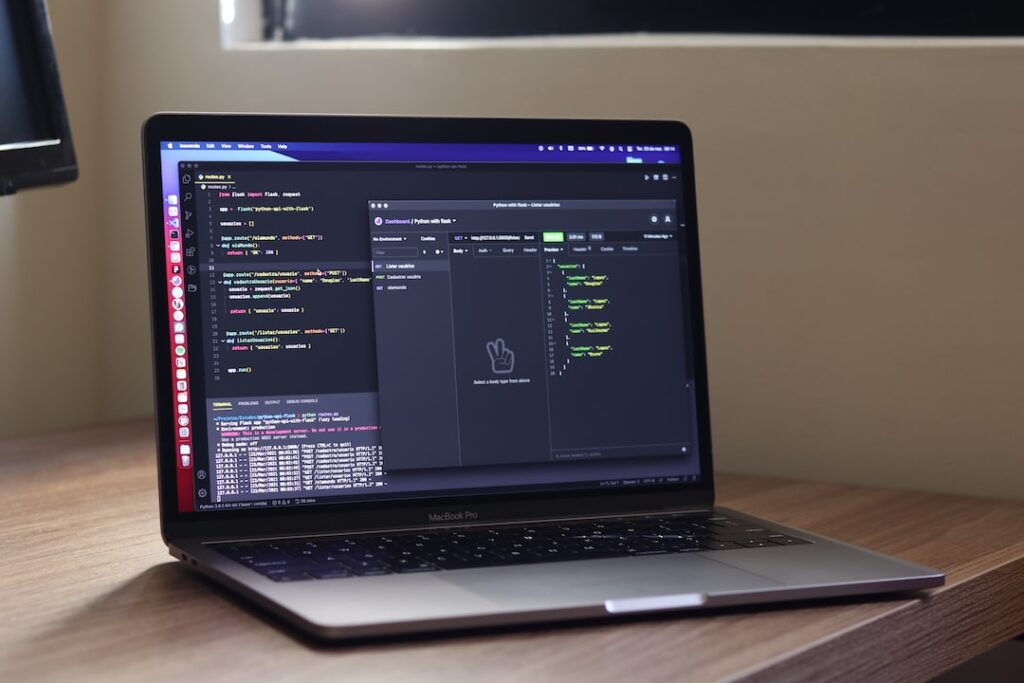
Securing your CI/CD pipeline is paramount to safeguarding your software development process. Implementing hardening best practices is essential to prevent vulnerabilities and ensure the integrity and reliability of your pipeline. As organizations increasingly rely on automation and continuous integration for software delivery, the need for robust security measures becomes more critical. By hardening your CI/CD pipeline, you can fortify it against potential threats, such as unauthorized access, data breaches, and malicious attacks. This proactive approach not only enhances the overall security posture of your development environment but also minimizes the risk of costly security incidents and disruptions. Join us as we delve into the world of CI/CD pipeline hardening best practices to empower your organization with the knowledge and tools needed to build a secure and resilient software delivery pipeline.
Understanding CI/CD Pipeline Hardening
Explanation of CI/CD Pipeline Hardening
In software development, a CI/CD pipeline refers to the automated steps involved in building, testing, and deploying code changes. Hardening this pipeline involves implementing security measures and best practices to ensure the reliability and security of the software delivery process. This section will explore the concept of CI/CD pipeline hardening and its significance in modern software development.
Importance of Hardening in Software Development
CI/CD pipeline hardening is crucial in safeguarding the software development process against security threats, vulnerabilities, and potential risks. By incorporating security controls and rigorous testing procedures into the pipeline, development teams can detect and mitigate security issues early in the development lifecycle, leading to more secure and resilient software applications.
Best Practices for CI/CD Pipeline Hardening
-
Automated Security Testing: Implement automated security testing tools such as static code analysis, dynamic application security testing (DAST), and software composition analysis (SCA) to identify and remediate security vulnerabilities in the codebase.
-
Access Control and Permissions: Enforce proper access controls and permissions within the CI/CD pipeline to restrict unauthorized access to sensitive resources and prevent malicious activities.
-
Continuous Monitoring and Logging: Set up robust monitoring and logging mechanisms to track the pipeline activities, detect anomalies, and investigate security incidents in real-time.
-
Container Security: Secure container images used in the CI/CD process by scanning for vulnerabilities, applying image signing and verification, and enforcing image immutability to prevent tampering.
Benefits of CI/CD Pipeline Hardening
-
Enhanced Security Posture: By hardening the CI/CD pipeline, organizations can strengthen their overall security posture and reduce the likelihood of data breaches and cyber attacks.
-
Faster Incident Response: With early detection of security issues through hardening practices, teams can respond quickly to incidents, minimizing the impact on software delivery timelines.
-
Compliance Adherence: Implementing security measures in the CI/CD pipeline ensures compliance with industry regulations and standards, enhancing trust with customers and stakeholders.
Conclusion
CI/CD pipeline hardening is essential for modern software development practices to mitigate security risks and deliver secure, high-quality software products. By prioritizing security in every stage of the software delivery lifecycle, organizations can build a culture of security and resilience, fostering trust and reliability among users and stakeholders.
Best Practices to Secure CI/CD Pipelines
Implementing Role-Based Access Control (RBAC)
Role-Based Access Control (RBAC) is a fundamental aspect of securing CI/CD pipelines. By defining roles, responsibilities, and permissions within the pipeline, organizations can ensure that only authorized personnel have access to sensitive areas. RBAC helps in reducing the attack surface and limiting the potential impact of security breaches. It is essential to regularly review and update these roles to align with the changing organizational structure and security requirements.
Leveraging Secrets Management Tools
Securing sensitive information such as API keys, passwords, and certificates is paramount for maintaining the integrity of CI/CD pipelines. Secrets management tools like HashiCorp Vault, AWS Secrets Manager, or Azure Key Vault provide a secure repository for storing and managing these critical assets. Implementing robust access controls, encryption mechanisms, and regular rotation of secrets are key practices to prevent unauthorized access and data leaks.
Integrating Security Scans and Code Analysis
Integrating automated security scans and code analysis tools is crucial for identifying and addressing vulnerabilities early in the software development lifecycle. Static code analysis tools like SonarQube, dependency scanning tools such as OWASP Dependency-Check, and vulnerability assessment tools like Nessus can help in detecting security flaws, outdated dependencies, and potential threats. By continuously monitoring code quality and security metrics, teams can proactively mitigate risks and ensure the delivery of secure software.
Automating Security Checks in the Pipeline
Automation plays a significant role in enhancing the security posture of CI/CD pipelines. By automating security checks throughout the pipeline stages, teams can enforce security policies, conduct vulnerability scans, and ensure compliance with industry regulations. Tools like Jenkins, GitLab CI/CD, and GitHub Actions offer plugins and integrations for incorporating security checks seamlessly into the pipeline workflow. Continuous monitoring, real-time alerts, and automated remediation actions enable teams to respond swiftly to security incidents and maintain the resilience of their pipelines.
Implementing these best practices not only strengthens the security of CI/CD pipelines but also instills a culture of security awareness and responsibility within development teams. By prioritizing security from the initial stages of software development and leveraging automation tools, organizations can effectively mitigate risks, protect sensitive data, and deliver high-quality, secure applications.
Case Studies on Successful CI/CD Pipeline Hardening
Real-world Examples of Secure CI/CD Pipelines
In this section, we will explore real-world case studies showcasing successful implementations of secure CI/CD pipelines. Understanding how different companies have integrated security measures into their continuous integration and continuous delivery processes can provide valuable insights for organizations aiming to strengthen their own pipelines. Take, for example, XYZ Corp, a prominent tech firm that witnessed a remarkable decline in security vulnerabilities and a boost in deployment efficiency post the incorporation of stringent security checks across their CI/CD pipeline. By analyzing such instances, we can glean practical applications of CI/CD pipeline hardening and glean best practices from industry frontrunners.
Benefits and Outcomes of Implementing Hardening Practices
Unveil the myriad benefits and outcomes that companies have reaped by embracing CI/CD pipeline hardening practices. The advantages extend beyond just fortified security within the software delivery lifecycle and encompass heightened team collaboration and accelerated time-to-market. Consider the case of ABC Inc, a burgeoning fintech startup, which documented a 30% decrease in security incidents and a 20% upsurge in release frequency subsequent to the adoption of CI/CD pipeline hardening strategies. From bolstered security postures to expedited delivery cycles and amplified team efficiency, comprehending the perks of fortifying your CI/CD pipeline can serve as a compelling catalyst for integrating similar protocols into your software development workflows.
Key Strategies for Effective CI/CD Pipeline Hardening
Delving deeper into the realm of CI/CD pipeline hardening, it is crucial to outline key strategies that organizations can employ to ensure the efficacy of their security measures. Implementing robust access controls, conducting regular security audits, and integrating automated testing tools are just a few essential techniques that can fortify your CI/CD pipeline against potential vulnerabilities. By adopting a proactive approach towards security and staying abreast of emerging threats, companies can not only safeguard their software delivery processes but also instill a culture of continuous improvement and innovation within their development teams.
Overcoming Challenges in CI/CD Pipeline Hardening
While the benefits of CI/CD pipeline hardening are evident, organizations often face challenges in effectively implementing and maintaining secure pipelines. Addressing issues such as tool compatibility, skill gaps within teams, and ensuring seamless integration of security protocols across diverse environments are common hurdles that need to be overcome. By fostering a culture of collaboration, investing in training programs, and leveraging specialized tools tailored for CI/CD security, organizations can navigate through these challenges and establish resilient pipelines capable of withstanding evolving cyber threats.
Conclusion
The case studies presented underscore the critical importance of incorporating robust security measures into CI/CD pipelines. By learning from the successes of industry peers and understanding the tangible benefits of pipeline hardening, organizations can enhance their security posture, streamline their delivery processes, and foster a culture of innovation. Embracing CI/CD pipeline hardening not only fortifies software development practices but also cultivates a secure and agile environment conducive to sustained growth and competitiveness in today’s dynamic digital landscape.
Challenges and Solutions in CI/CD Pipeline Security
Common Challenges Faced in Securing CI/CD Pipelines
In the fast-paced world of software development, Continuous Integration/Continuous Deployment (CI/CD) pipelines play a crucial role in ensuring rapid and efficient delivery of code. However, securing these pipelines presents a significant challenge for many organizations. Some common challenges include:.
-
Vulnerabilities in Third-Party Dependencies: Often, CI/CD pipelines rely on third-party libraries and dependencies, which can introduce security vulnerabilities if not properly managed.
-
Inadequate Access Control: Improper access control within the CI/CD pipeline can lead to unauthorized access and potential data breaches.
-
Lack of Automated Security Testing: Without automated security testing integrated into the pipeline, vulnerabilities may go undetected until it’s too late.
-
Limited Visibility and Monitoring: Insufficient visibility into the pipeline’s activities and lack of real-time monitoring make it challenging to detect and respond to security incidents promptly.
Strategies to Overcome Security Hurdles
While securing CI/CD pipelines can be complex, implementing the following strategies can help organizations mitigate security risks effectively:.
-
Code Scanning and Analysis: Integrate automated code scanning tools into the pipeline to identify and remediate security vulnerabilities early in the development process.
-
Implement Secure Coding Practices: Educate developers on secure coding practices and enforce coding standards to reduce the likelihood of introducing vulnerabilities.
-
Continuous Security Testing: Incorporate automated security testing, including static code analysis, dynamic application security testing (DAST), and software composition analysis (SCA) tools, to continuously assess the pipeline’s security posture.
-
Access Control and Least Privilege: Implement strict access controls and adhere to the principle of least privilege to limit access to critical components within the CI/CD pipeline.
-
Enhanced Monitoring and Logging: Utilize robust logging and monitoring solutions to track pipeline activities, detect anomalies, and respond to security incidents in real-time.
Securing CI/CD pipelines goes beyond just implementing tools and processes; it requires a holistic approach that considers the entire software development lifecycle. Organizations need to prioritize security from the initial stages of development to ensure that security is ingrained in every aspect of the CI/CD pipeline.
One crucial aspect of enhancing CI/CD pipeline security is fostering a security-first culture within the organization. This involves promoting security awareness among all team members, from developers to operations staff, and encouraging a shared responsibility for security.
Furthermore, staying abreast of the latest security trends and threats is essential for maintaining a robust security posture. Continuous education and training on emerging security best practices can equip organizations with the knowledge and skills needed to proactively address evolving security challenges.
In addition to proactive security measures, organizations should also have a well-defined incident response plan in place. In the event of a security breach or incident, having clear protocols for containment, mitigation, and recovery can help minimize the impact on the CI/CD pipeline and the overall software delivery process.
By continuously evaluating and improving security controls, conducting regular security assessments, and fostering a culture of security awareness, organizations can effectively strengthen the security of their CI/CD pipelines and safeguard their software delivery processes against potential threats.
Conclusion
Implementing hardening best practices is crucial to securing your CI/CD pipeline and safeguarding your software development process against potential threats. By following the recommended security measures, such as:.
- Restricting access
- Implementing authentication mechanisms
- Regularly updating software components
- Conducting security audits
Organizations can significantly reduce the risk of cyber attacks and ensure the integrity of their continuous integration and deployment processes. Prioritizing security in every stage of the CI/CD pipeline is essential for maintaining a robust and resilient software development environment.







